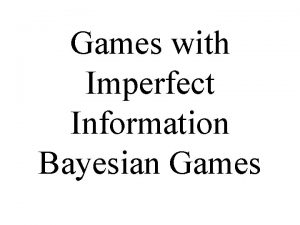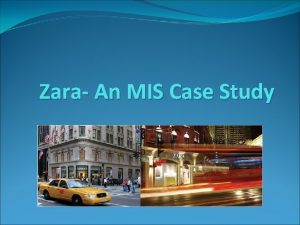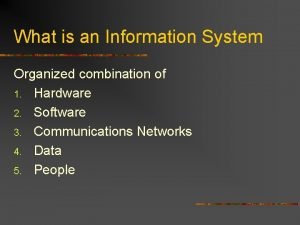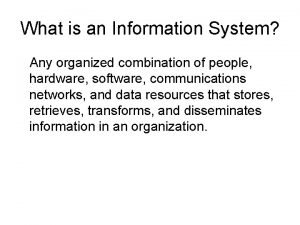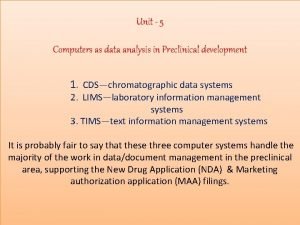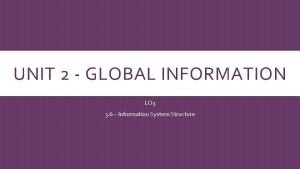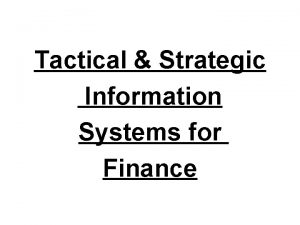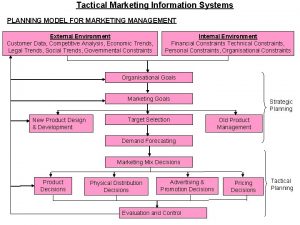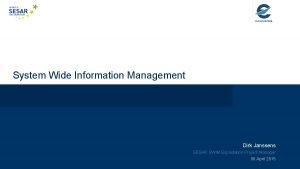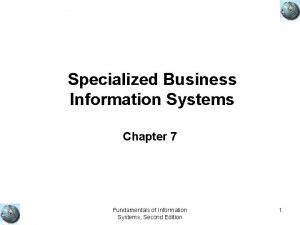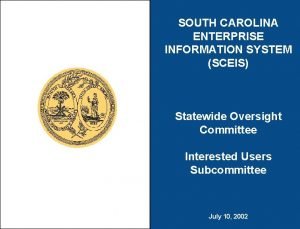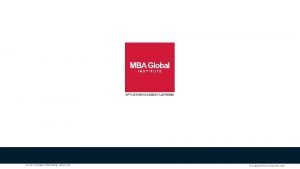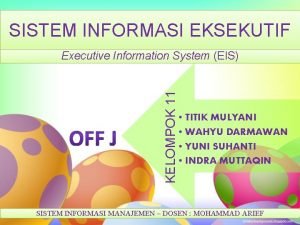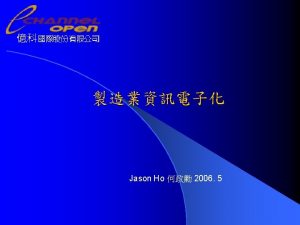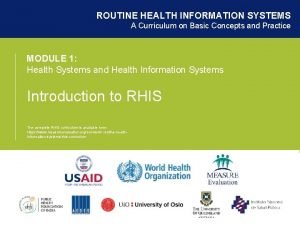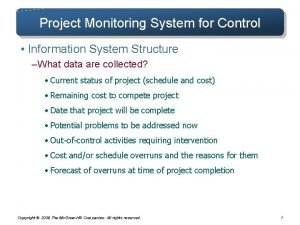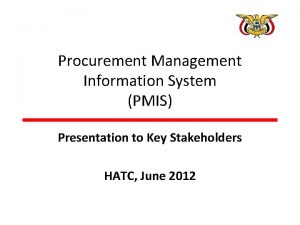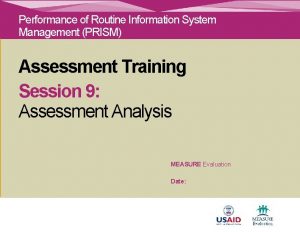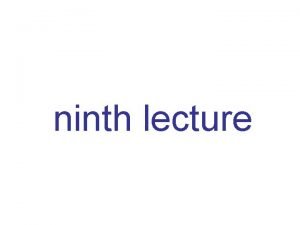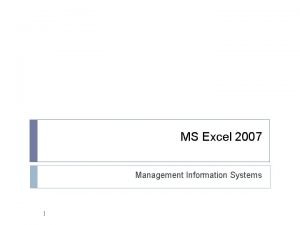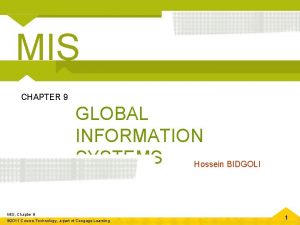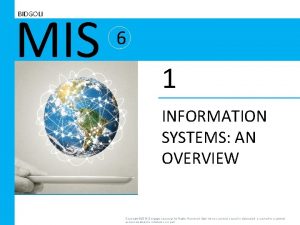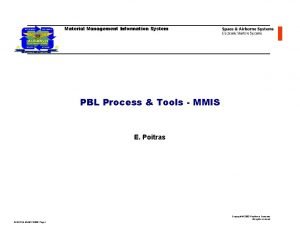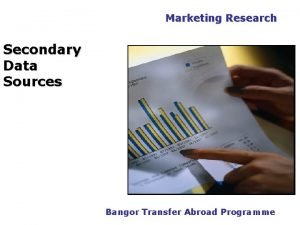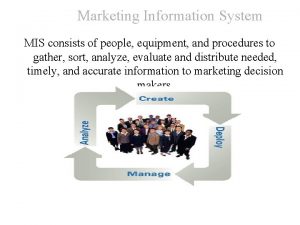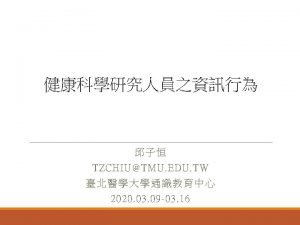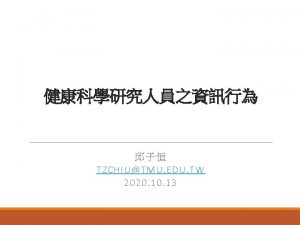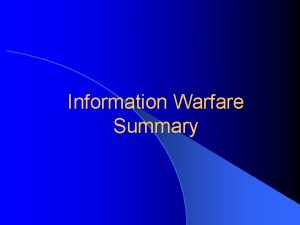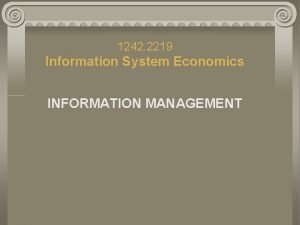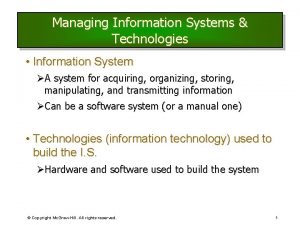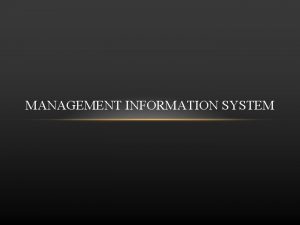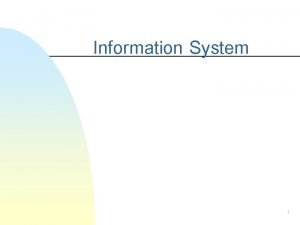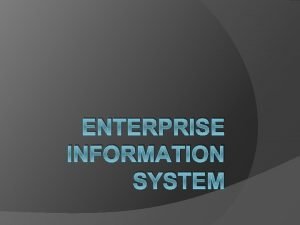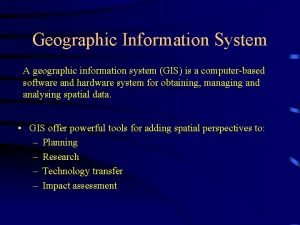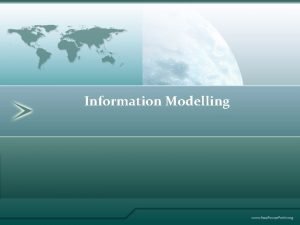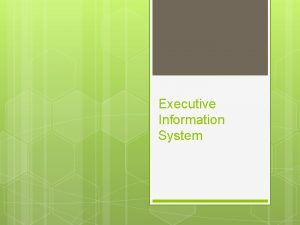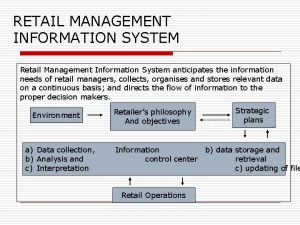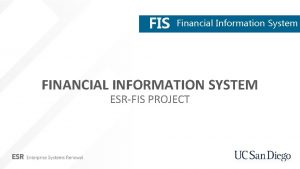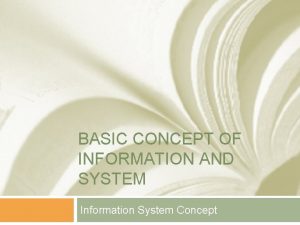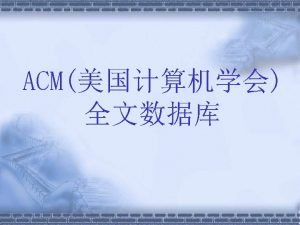Information System What is a system A system

































- Slides: 33

Information System

What is a system? Ø A system - is a set of related components that produces specific results. Ø Mission-critical System - is one that is vital to a company’s operations.

Information System Ø An information system (IS) - is any combination of information technology and people's activities that support operations, management and decision making. Ø It is frequently used to refer to the interaction between people, processes, data and technology.

Why study information system? Ø Information technology can help all kinds of businesses improve the efficiency and effectiveness of their business processes, managerial decision making, and workgroup collaboration, thus strengthening their competitive positions in a rapidly changing market place.

Why study information system? Ø Internet-based systems have become a necessary ingredient for business success for today’s dynamic global environment. Ø Information technologies are playing an expanding role in business.

Components of an Information System Ø Ø Ø Hardware Software Data Process People

Components of an Information System q Hardware Ø Moore’s Law - describes a long-term trend in the history of computing hardware. The number of transistors that can be placed inexpensively on an integrated circuit doubles approximately every two years. This trend has continued for more than half a century and is expected to continue until 2015 or 2020 or later.

Components of an Information System q Software Ø System Software Ø Application Software Ø Enterprise Applications Ø Horizontal System - adapted for use in many different types of companies. Ex: inventory, payroll

Components of an Information System q Software Ø Vertical System - designed to meet the unique requirements of a specific business or industry. Ex: web-based retailer Ø Legacy System – older system used by the company

Components of an Information System q Data Ø Raw material that an information system transforms into useful information Ø Linking of tables from a database

Components of an Information System q Processes Ø Define the tasks and business functions that users, managers, and IT staff members perform to achieve specific results.

Components of an Information System q People Ø Users, or end users, are the people who interact with an information system, both inside and outside the company

Categories of Companies Ø Production-oriented - primarily manufacture and sell products Ø Service-oriented - primarily offer information or services, or sell goods produced by others

Categories of Companies Ø Internet-dependent or Dot-com (. com) bases its primary business in a commercial web site rather than using traditional business channels Ø Brick-and-mortar – conduct business from a physical location instead of from a web site

Impact of the Internet Ø E-Commerce or I-Commerce Ø B 2 C Ø B 2 B

Characteristics of Information Systems Ø Does this system interact with other system? Ø A company’s information system also can interface with a system operated by another firm, such as when a payment is made by one company’s accounts payable system to another company’s accounts receivable system. Ø This process, known as Electronic Data Interchange (EDI), involves the computerto-computer transfer of data between companies.

Characteristics of Information Systems Ø What are the system’s boundaries? Ø A system boundary indicates where one system ends and another system begins. Ø Will the system handle specialized business needs? Ø Many firms require specialized systems for information management that is unique to their company or industry.

Characteristics of Information Systems Ø What size is the company, and what growth is forecast? Ø Large and small companies in the same industry have different information systems requirements.

Major Types of Information System Ø Enterprise Computing Systems Ø Transaction Processing Systems Ø Business Support Systems Ø Knowledge Management Systems Ø User Productivity Systems

Major Types of Information System q Enterprise Computing Systems Ø Refers to information systems that support company-wide data management requirements. Ex: airline reservation, credit card billing Ø Enterprise Resource Planning (ERP) systems provide cost-effective data access for users and managers throughout the company.

Major Types of Information System q Transaction Processing Systems (TPS) Ø Transaction Processing (TP) systems and Online Transaction Processing (OLTP) systems are called operational systems because they process data generated by day-to-day business operations. Ex: customer billing, accounts receivable, warranty claim processing.

Major Types of Information System q Business Support Systems Ø Provide job-related information support to users at all levels of a company Ø Management Information System (MIS)

Major Types of Information System q Knowledge Management Systems Ø Sometimes called expert systems because they simulate human reasoning by combining a knowledgebase and inference rules that determine how the knowledge is applied.

Major Types of Information System q Knowledge Management Systems Ø A knowledge base consisting of a large database allows users of find information by clicking menus, typing keywords, or entering text questions in normal English phrases.

Major Types of Information System q Knowledge Management Systems Ø Inference rules are logical rules that identify data patterns and relationships. Ø Fuzzy logic allows logical inferences to be drawn from imprecise relationships.

Major Types of Information System q User Productivity Systems Ø Provide employees at all organizational levels with a wide array of tools that can improve quality of job performance Ex: LAN, WAN, email, video conference

Benefits of Information System

Information System Users

Information System Users Organizational Structure q. Top Management ØTop managers develop long-range plans, called strategic plans that define the company’s overall mission and goals.

Information System Users Organizational Structure q. Middle Management ØMiddle managers focus their goals on a shorter time frame, usually ranging from one month to one year. ØThey develop plans to achieve business objectives in a process called tactical planning.

Information System Users Organizational Structure q. Lower Management ØSupervisors and team leaders oversee operational employees and carry out day-to -day operational plans.

Information System Users Organizational Structure q. Operational Employees ØOperational employees primarily use TP systems to enter and receive data they need to perform their jobs. ØA trend, called empowerment, gives employees more responsibility and accountability.

QUESTIONS AND COMMENTS ?
 Imperfect information vs incomplete information
Imperfect information vs incomplete information Zara information system
Zara information system Information system is a combination of
Information system is a combination of A system is a combination of
A system is a combination of Preclinical data systems
Preclinical data systems Difference between closed and open system
Difference between closed and open system Tactical accounting and financial information systems
Tactical accounting and financial information systems Tactical information system
Tactical information system Faa swim
Faa swim Swim sesar
Swim sesar Suswasthya kendra management information system
Suswasthya kendra management information system Specialized information systems examples
Specialized information systems examples South carolina sceis
South carolina sceis Saaqis
Saaqis Kotler et al 2017
Kotler et al 2017 Pengertian executive information system
Pengertian executive information system Shop floor control in erp
Shop floor control in erp Importance of information system
Importance of information system District level routine information system
District level routine information system Retail information systems houston
Retail information systems houston Eacf project management
Eacf project management Procurement management information system
Procurement management information system Principles of information systems, seventh edition
Principles of information systems, seventh edition Performance of routine information system management
Performance of routine information system management Capturing marketing insights
Capturing marketing insights Male reproductive system information
Male reproductive system information Is excel a management information system
Is excel a management information system Global information system
Global information system Major components of an information system
Major components of an information system Material management information system
Material management information system Benefits of secondary research
Benefits of secondary research Recruise meaning
Recruise meaning Marketing information system mis
Marketing information system mis Types of marketing information systems
Types of marketing information systems
